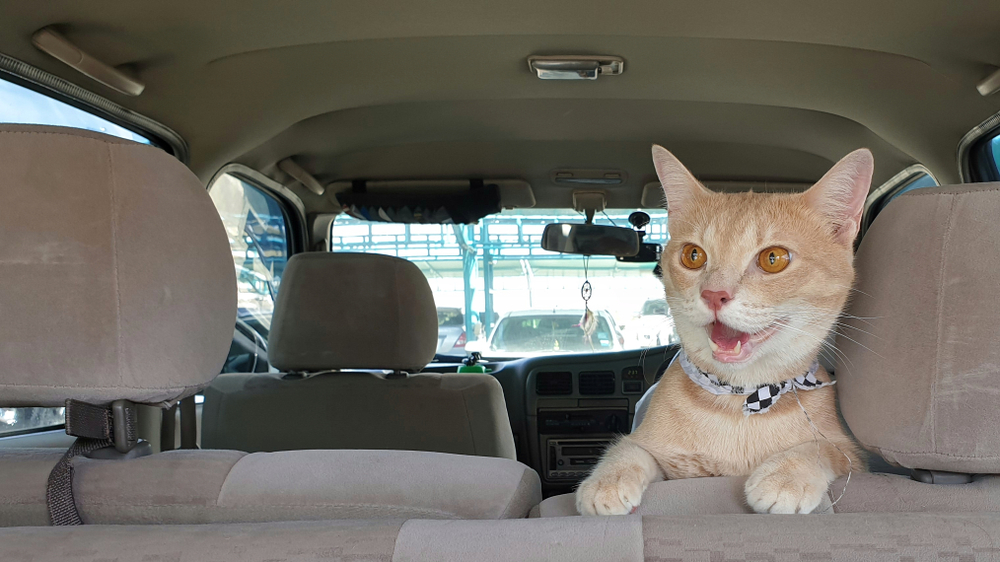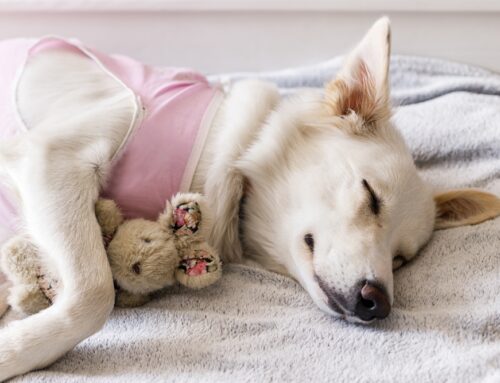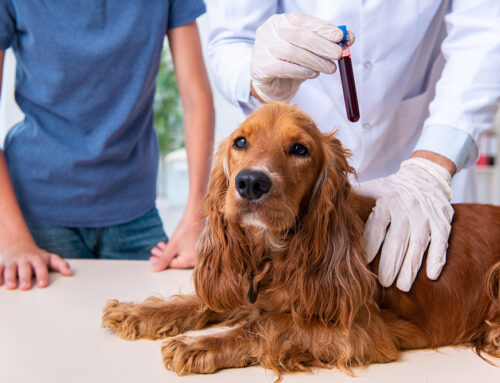Many pets enjoy sunbathing and exercising in warm weather, but excessive heat can quickly become deadly. Humans can efficiently cool their bodies through sweating, so long as they remain adequately hydrated. Dogs primarily use panting to cool down, but this is no longer efficient when humidity rises or high temperatures do not allow adequate evaporation. This means that pets are at higher risk for heat-related illness than people.
Heatstroke is often deadly for pets, because excess body heat damages organs irreparably—up to half of dogs who receive heatstroke treatment may die. Milford Animal Hospital wants pet owners to understand how heatstroke develops, so they can take steps to prevent a heat-related tragedy. Here we share more information about heatstroke and how to keep your pet safe.
What is pet heatstroke?
Heatstroke occurs when a pet’s body temperature rises above normal, which can happen to a pet left in a hot car or in a backyard without water or shade. Pets who have a medical problem that makes cooling down harder can also develop heatstroke. Heatstroke’s severity depends on how high and how long the pet’s temperature stays elevated, but almost always includes some degree of organ dysfunction. Brain damage and blood clotting problems also contribute to the high mortality rate. Pets whose owners provide prompt cooling measures on the way to the veterinary hospital have an increased chance of long-term survival.
Which pets are at risk for heatstroke?
Dogs are far more likely to suffer heatstroke than cats, who generally self-regulate and find ways to cool themselves. All dogs can develop heatstroke, especially when left unattended in a hot area, but some more easily develop the condition. Pets at higher risk include:
- Overweight pets
- Pets with heart, lung, airway, and endocrine disorders
- Older and extremely young pets
- Brachycephalic breeds (e.g., bulldog, pug)
How do I know if my pet is too hot?
Heat-related illness is progressive and develops in three phases. The first phase is heat stress, which is characterized by muscle spasms or cramps and is easily missed. The second phase is heat exhaustion, which often includes weakness, vomiting, or diarrhea, but a normal or only slightly elevated body temperature. The last phase is heatstroke, which includes a markedly elevated body temperature and the following possible signs:
- Rapid heart rate
- Disorientation or stumbling
- Collapse
- Seizures
- Bleeding or bruising
- Reddened gums
- Excessive panting
What other heat-related dangers could my pet face?
While heatstroke is the most significant danger pets face from high summer temperatures, they may also suffer from some less serious issues. Hot asphalt can burn their paw pads and contribute to general overheating as the heat radiates up to their low-lying bellies. Dogs with sparse, light-colored hair coats can develop sunburn and may benefit from pet-safe sunscreens. Strong UV light can also contribute to some eye diseases, although these are less common.
How do I keep my pet safe in the heat?

You can protect your pet by following our heat safety tips:
- Never leave pets in hot vehicles or unattended outdoors.
- Provide cool water and shady resting areas outdoors.
- Take frequent breaks during exercise and stay inside during the hottest times of day.
- Slowly build up the time your pet spends outdoors in the heat.
- Keep high-risk pets indoors as much as possible.
- Watch for heat stress signs and move pets into a cool area immediately.
- Soak your pet’s fur in cool—not ice cold—water, or lay wet towels over their body. Then, seek immediate veterinary care if you are concerned that your pet has heat-stroke.
Summer can be fun and enjoyable for all, but you must take steps to safeguard your pet. Heatstroke and other heat-related issues happen quickly, so keep a close eye on your pet while outdoors.
If you are concerned that your pet has heatstroke, contact Milford Animal Hospital immediately, or head to the nearest emergency veterinary hospital for care. Schedule a visit or consultation with our team for a summer wellness checkup and to discuss more tips and tricks for helping pets cope with the heat.







Leave A Comment